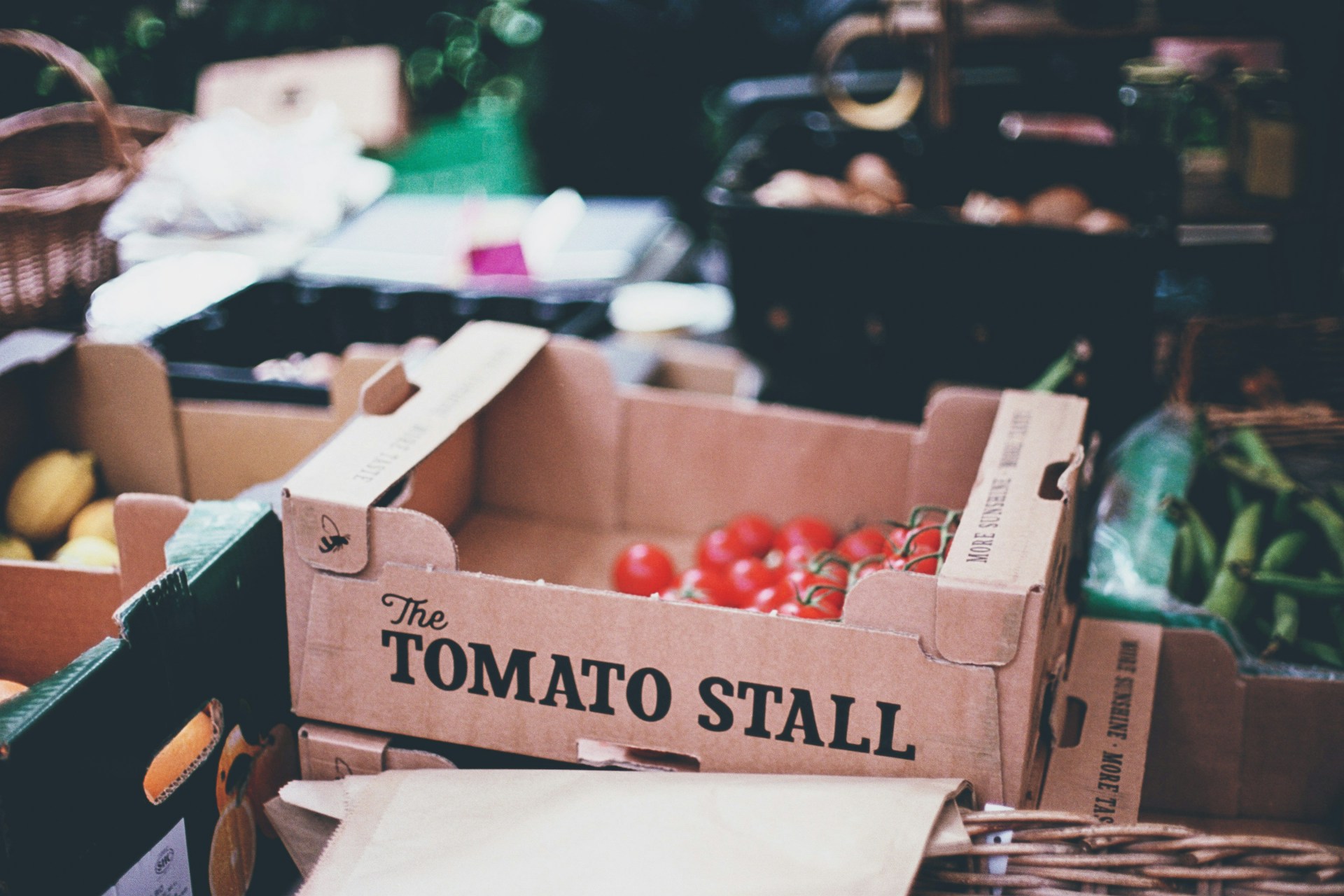In today’s fast-paced world, sustainable practices within the produce packing industry are more critical than ever.
A dynamic shift towards eco-friendly procedures has been noticed, highlighting the importance of sustainable packing materials and methods.
However, the challenge that many enterprises face is understanding and implementing these practices effectively.
Industry leaders and rising businesses alike seek definitive strategies to mitigate their impact on the environment.
In this context, meeting sustainability targets not only offers a conscious move towards protecting our planet but also presents an opportunity to boost operational efficiency.
The focus of this discourse will be on presenting effective techniques for businesses to successfully reach these sustainability aims.
Ways To Achieve Sustainability Goals In Produce Packing
1. Use biodegradable or compostable packaging materials
One of the vital ways to achieve sustainability goals within the produce packing industry is to use biodegradable or compostable packaging materials.
This approach is sustainable because biodegradable and compostable materials return to the environment safely without causing harm or contributing to prolonged waste storage in landfills.
Sourcing these materials shows company dedication to sustainability and produce packing becomes a more environment-friendly process.
Investing in biodegradable and compostable packaging materials lowers dependency on non-renewable resources and reduces the overall environmental footprint.
These materials are derived from bioderived resources like cornstarch, sugarcane, or even mushroom mycelium, presenting a renewable, eco-friendly alternative to conventional plastic packaging.
Additionally, biodegradable packaging often breaks down much faster than traditional plastic packaging, typically within a year if disposed of correctly, compared to hundreds of years for plastic.
On the other hand, compostable packaging materials are beneficial to the soil as they enrich it with nutrients when they decompose, supplying further environmental value.
Another advantage of compostable and biodegradable packaging is that they are often safe for food contact, reducing the risk of harmful chemical leaching that may happen with traditional plastics.
There are also cost benefits attached to the use of these materials, with potential savings in waste disposal field and potential revenue opportunities from establishing a composting service for used packaging materials.
Despite the benefits, adopting this strategy require thorough assessment due to differences in local regulations, composting facilities availability, and consumers’ composting habits.
It’s also important to note that while biodegradable and compostable packaging is beneficial, it doesn’t eliminate the need for other sustainability efforts like reducing, reusing, and recycling.
To support the viability and efficacy of such a solution, companies need to invest in public awareness campaigns explaining the correct disposal methods for these packages to ensure they end up in the right place.
This innovative solution proves to be an effective way to integrate sustainability into the daily operations of a produce packing company, creating a more resilient and responsible business model.
Ultimately, the adaptation of biodegradable or compostable packaging is a way to operationalize sustainability goals and show that responsible business practice can also be profitable practice.
2. Implement recycling programs within company operations.
The implementation of recycling programs within company operations is a crucial aspect of achieving sustainability goals in produce packing.
Firstly, it is important to note that recycling is not just about reusing materials; it is about reducing overall waste and contributing to the conservation of valuable natural resources.
This begins with an assessment of the current waste generation patterns within your company.
It is important to identify the type and volume of waste that your operations are producing. This data is crucial in determining the components of your recycling program.
Once you have established a firm understanding of your company’s waste profile, you can strategize and design your recycling programs tailored to your company’s unique needs.
Can you repurpose packing materials? Are there by-products that can be reintegrated into the production process? Asking such questions will help shape your recycling program.
Your entire team has to be committed to recycling efforts because it won’t be successful if it’s not embraced by everyone involved.
Training employees on recycling and regular communication about the importance and benefits of recycling is essential. These are keys to fostering a company-wide culture of sustainability.
Moreover, implementing a successful recycling program requires a strategic partnership with waste management companies. They have the expertise and equipment to handle and process recyclable materials on a large scale.
It is essential to choose a partner that shares your commitment to sustainability and has demonstrated efficient recycling operations.
Frequent audits and evaluations of the recycling program should be done to ensure its effectiveness and make necessary adjustments. This is an important part of the continuous improvement process.
By tracking the progress and measuring the impact of your recycling efforts, you can identify areas for improvement and build on success. This will also help to demonstrate the company’s commitment to sustainability to stakeholders.
Taking these steps will make your operation more sustainable and will significantly reduce your company’s environmental impact.
Incorporating recycling programs within your company isn’t just good for the planet – it’s good for business too. Consumers are becoming more aware of the environmental impact of their purchases and are opting for brands that demonstrate a commitment to sustainability.
Implementing robust recycling programs within your operations is a tangible way to showcase this commitment and stay competitive in the market.
3. Minimize Packaging Size to Reduce Waste
The era of profligacy in packaging products is steadily giving way to a more mindful approach, particularly within the produce packing industry.
Not only is there an elevating awareness about the environmental impacts of packaging waste, but consumers are also actively seeking out more environmentally ethical options.
One of the essential tactics at the disposal of produce packing companies is the minimization of packaging size.
This simple but powerful step can significantly reduce the volume of waste produced, realize cost savings, and position the company as a responsible business in addressing environmental concerns.
However, executing this strategy requires a holistic review of existing packaging protocols and a commitment to investing in redesign and reengineering processes.
It starts with the reassessment of product-to-package ratios, working toward eliminating unnecessary layers or parts of the packaging that do not serve the preservation or protection of the product.
In many cases, a smaller or simplified packaging solution meets these needs just as effectively, without the excess materials and additional waste.
The right sizing of packaging has a ripple effect on sustainability by reducing the amount of raw materials needed in production and easing pressures on disposal and recycling infrastructures.
It’s also worth noting that minimizing packaging carries benefits beyond the environmental sphere.
Investments in packaging optimization can yield tangible cost efficiencies, as using less materials invariably results in direct cost savings.
Moreover, smaller packaging means more products can fit onto a pallet or into a shipping container, leading to more efficient transportation and, thus, less carbon footprint per unit of product shipped.
The aesthetic appeal of minimalist packaging can also resonate with consumers’ perceptions of a company’s eco-conscious stance, enhancing brand image and loyalty.
While the journey to minimize packaging may certainly have its challenges – from dealing with initial redesign costs to ensuring product protection – the far-reaching benefits certainly make it a worthwhile pursuit.
Ultimately, every step taken to reduce packaging size leads us closer to a more sustainable produce packing industry.
4. Source materials from responsible, sustainable suppliers.
One of the crucial ways to achieve sustainability goals in produce packing is by sourcing materials from responsible, sustainable suppliers.
Doing so not only promotes your company’s commitment to environmental responsibility, but it also enhances your reputation among consumers who are increasingly valuing sustainable practices.
There are numerous criteria that you can use to evaluate whether a supplier is sustainable or not.
Firstly, look at whether they have certifications from recognized environmental or sustainability organizations.
Such certifications provide a reliable indicator of the supplier’s commitment to sustainable practices in their operations.
Furthermore, understand the supplier’s manufacturing processes.
They should source raw materials responsibly, utilize energy-efficient equipment, and minimize waste generation.
Another aspect to look into is the supplier’s social responsibility initiatives, such as fair labor practices and positive community engagement.
This ensures that they are not just environmentally conscious, but also socially accountable.
In addition, assess the supplier’s ability to provide stable, consistent supply of the quality materials you need for your packaging.
This will help ensure that your shift to sustainable suppliers does not cause any disruptions to your operations or compromise the quality of your packaging.
Besides, collaborating with suppliers who share your sustainability vision can foster innovation in your packaging.
They may be able to offer insights or introduce new materials that could further enhance the sustainability of your packaging.
However, you should also be prepared to potentially expend more resources when sourcing from sustainable suppliers.
The materials they provide can often be more expensive than those from non-sustainable suppliers due to the costs associated with implementing and maintaining sustainable practices.
Nevertheless, the long-term benefits of using sustainable packaging materials—such as a stronger brand, reduced environmental impact, and better customer engagement—often justify these higher upfront costs.
Remember, choosing sustainable suppliers is a valuable element in achieving the overall sustainability goals of your produce packing process.
5. Invest in Energy-Efficient Packing Machinery
Investing in energy-efficient packing machinery is a crucial aspect of achieving sustainability goals in produce packing.
Simply put, these type of machinery often consumes less power, thus reducing the operational carbon footprint of the packing industry.
But the benefits go beyond just energy efficiency.
Energy-efficient machines often require fewer resources, such as water and raw materials, contributing not only to financial savings but also, and more importantly, to environmental preservation.
It’s important to note that the process of transitioning to energy-efficient packing machinery can require capital expenditure and technical expertise.
However, the return on investment is usually high as these machines are designed for long-term use with decreased energy costs.
Furthermore, with the limited availability and societal pressure to lessen the use of natural resources, more and more companies are leaning towards this viable alternative.
Not only does it make a positive impact on the environment, but ethically-minded consumers also appreciate companies that take deliberate steps towards sustainability.
On the technical side, these machines often have built-in features such as automated systems and precision measurements that reduce waste being produced during the packing process.
Packing machines with energy recovery systems are an excellent example of how energy can be reused rather than lost as heat or noise.
These systems transform the otherwise lost energy into useful work, increasing energy efficiency.
Thus, apart from the benefits of decreased operational cost and carbon footprint, the use of energy-efficient packing machinery can lead to improved product quality and production volume.
It’s also worth noting that switching to energy-efficient machinery can open doors to potential tax benefits in certain regions.
Many governments worldwide offer incentives to companies that make a significant effort to reduce their environmental impact by implementing energy efficiency measures.
The wide range of benefits from investing in energy-efficient packing machinery underlines its importance in achieving sustainability goals in produce packing.
This fundamental shift not only helps to conserve our natural resources, but also enhances the company’s image as a responsible and sustainable option in the marketplace.
The Bottom Line
Adopting environmentally conscious practices in packaging can have a profound impact on the preservation of our planet and its resources.
Utilizing biodegradable or compostable packaging materials, recycling within company operations, reducing packaging size, sourcing from sustainable suppliers, and investing in energy-efficient machinery are all steps forward in realizing a green future.
With these implementable changes, businesses can actively contribute to sustainability, generate less pollution, and performance wise, potentially save on costs in the long run.
Hence, these transformative measures are not just beneficial for the environment, but they can also serve as key drivers for business growth and advancement.




